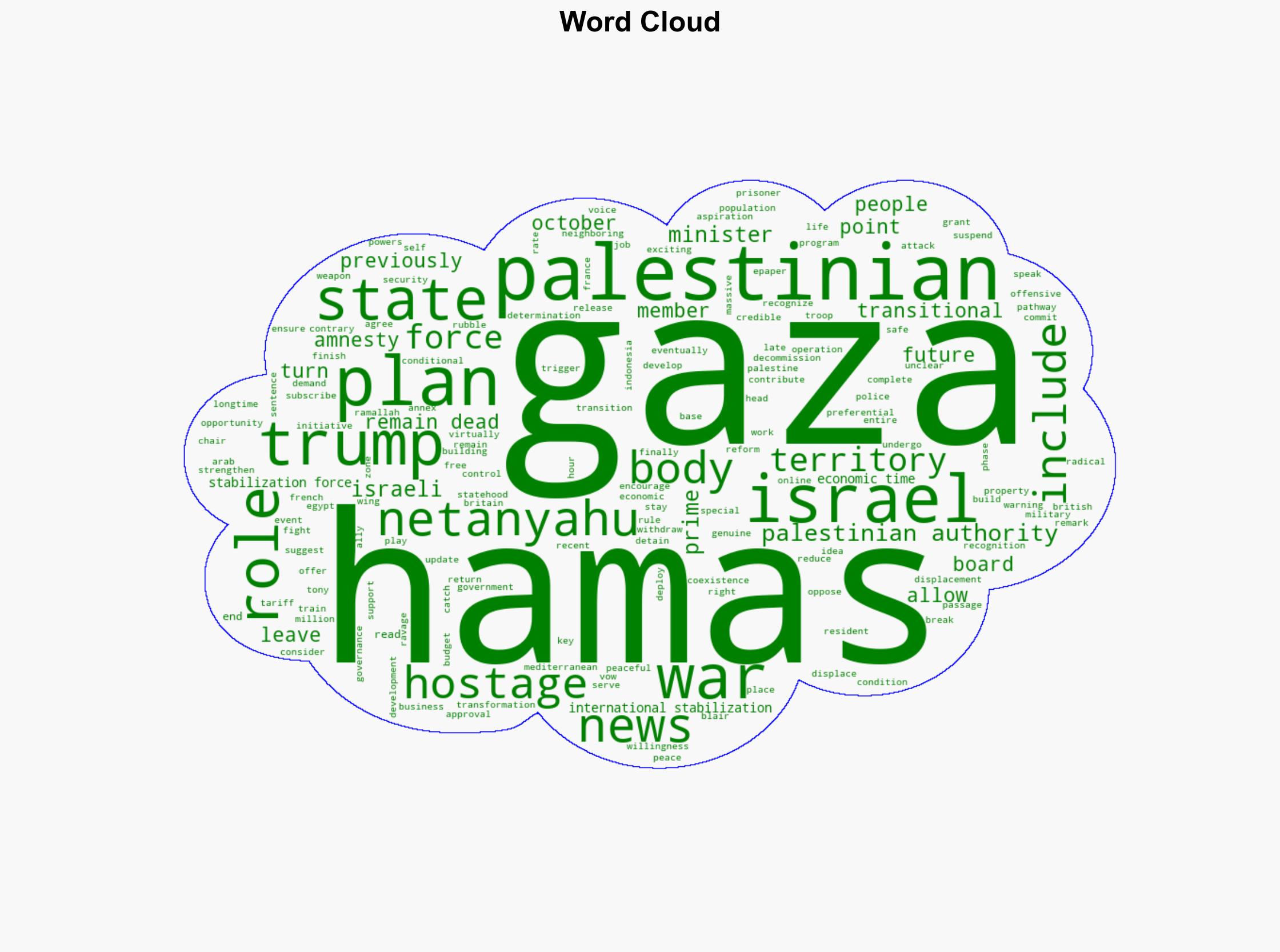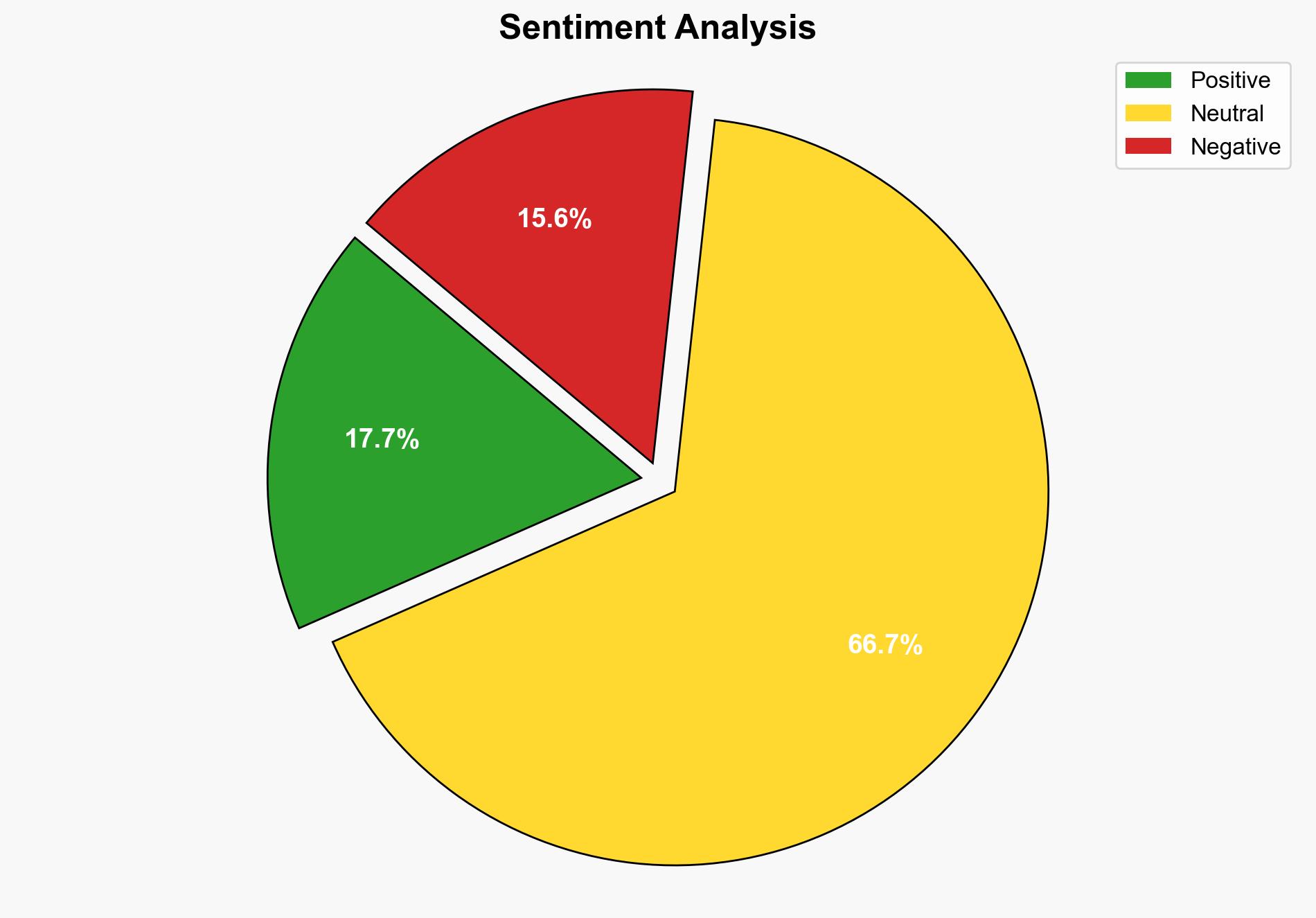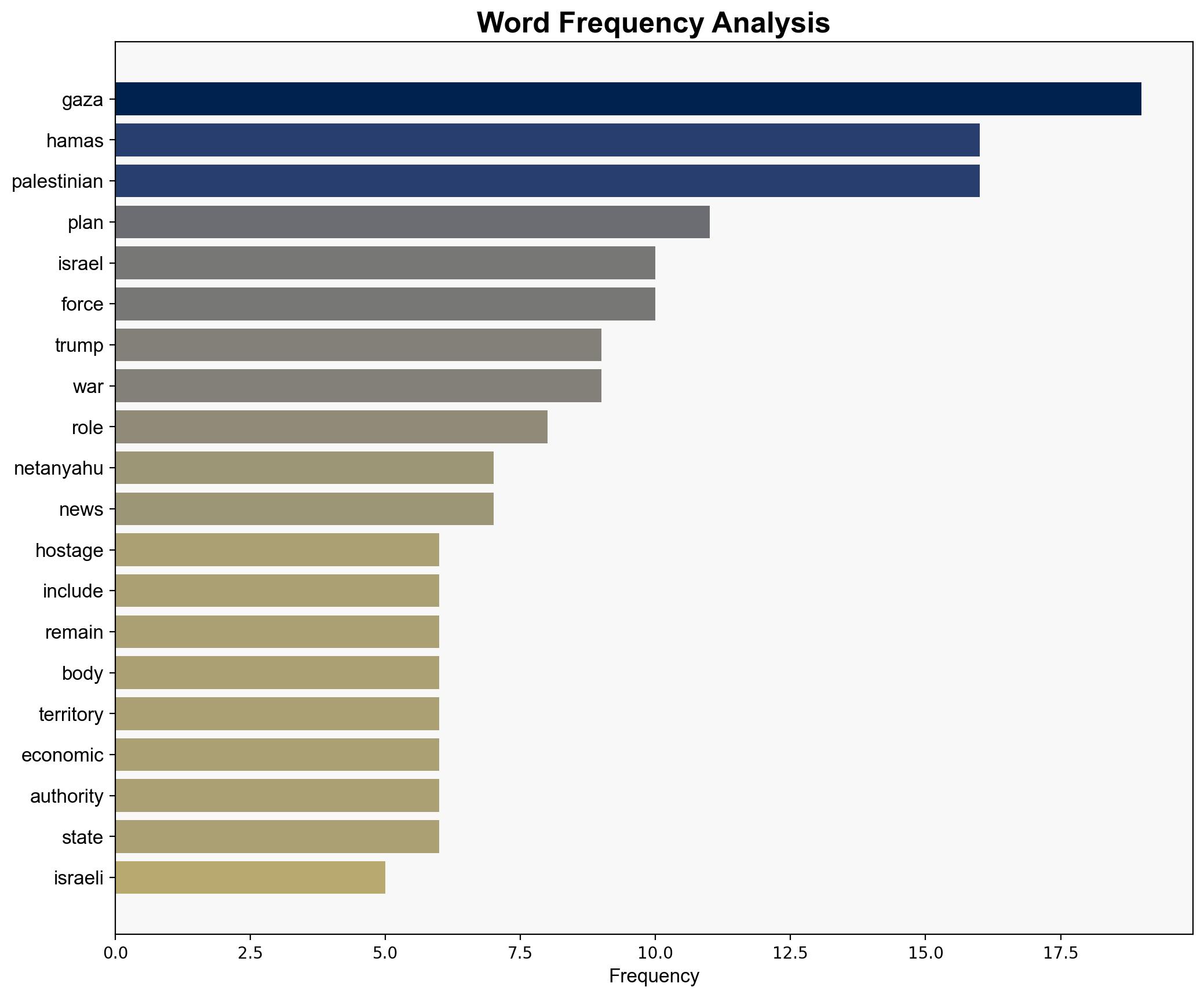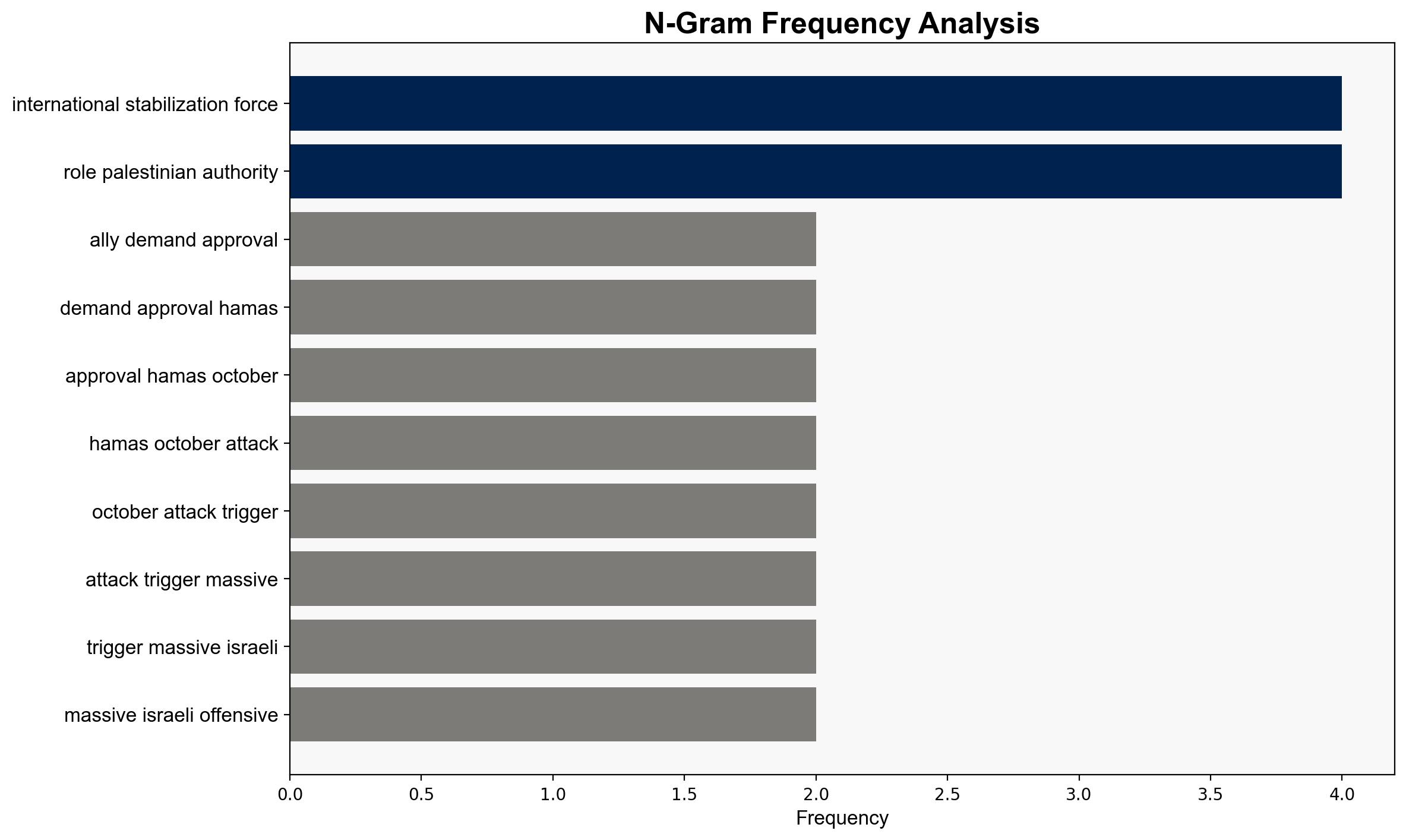Board of Peace hostage release and more Key points of Trump’s Gaza peace plan – The Times of India
Published on: 2025-09-30
Intelligence Report: Board of Peace hostage release and more Key points of Trump’s Gaza peace plan – The Times of India
1. BLUF (Bottom Line Up Front)
The most supported hypothesis is that the proposed peace plan aims to stabilize Gaza through economic incentives and international cooperation, but faces significant challenges due to political opposition and the complexity of regional dynamics. Confidence level: Moderate. Recommended action: Engage in multilateral diplomatic efforts to address stakeholder concerns and ensure robust monitoring mechanisms for the plan’s implementation.
2. Competing Hypotheses
1. **Hypothesis A**: The peace plan is a genuine effort to end hostilities and promote economic development in Gaza, with international support and incentives for cooperation from all parties involved.
2. **Hypothesis B**: The plan primarily serves as a strategic maneuver to consolidate Israeli control over Gaza, with economic development as a secondary consideration, potentially marginalizing Palestinian leadership and interests.
3. Key Assumptions and Red Flags
– **Assumptions for Hypothesis A**: Assumes Hamas and other Palestinian factions will agree to disarmament and coexistence. Assumes international stabilization forces will be effective and accepted by local populations.
– **Assumptions for Hypothesis B**: Assumes Israeli and U.S. interests align in limiting Palestinian statehood. Assumes economic incentives will not be sufficient to overcome political resistance.
– **Red Flags**: Lack of clarity on the role of the Palestinian Authority and potential resistance from right-wing Israeli factions. Ambiguity in the commitment of international forces and their rules of engagement.
4. Implications and Strategic Risks
– **Economic Risks**: Failure to implement economic zones could exacerbate poverty and instability in Gaza.
– **Geopolitical Risks**: Potential backlash from Palestinian factions and regional powers if perceived as undermining Palestinian sovereignty.
– **Security Risks**: Risk of renewed hostilities if disarmament and security measures are not effectively enforced.
– **Psychological Risks**: Potential for increased radicalization if the plan is viewed as coercive or unjust.
5. Recommendations and Outlook
- Engage with regional and international partners to ensure broad support and legitimacy for the peace plan.
- Develop contingency plans for potential escalation scenarios, including increased military presence or humanitarian aid.
- Scenario-based projections:
- Best Case: Successful implementation leads to long-term stability and economic growth in Gaza.
- Worst Case: Plan fails, resulting in renewed conflict and humanitarian crisis.
- Most Likely: Partial implementation with ongoing tensions and sporadic violence.
6. Key Individuals and Entities
– Donald Trump
– Benjamin Netanyahu
– Tony Blair
– Hamas
– Palestinian Authority
7. Thematic Tags
national security threats, regional focus, geopolitical strategy, peace process





